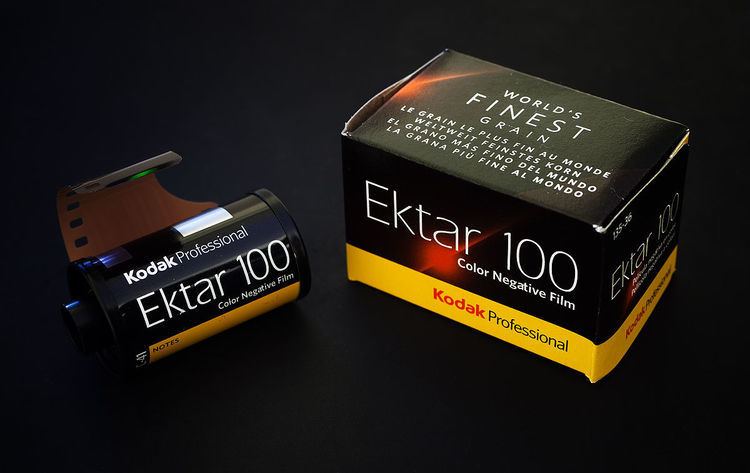Maker Eastman Kodak Format 35mm, 120, 4x5, 8x10 | Speed 100/21° Grain Ultra-fine | |
 | ||
Ektar is a Kodak color negative professional film, formerly branded as a semi-professional film. The brand was reintroduced in 2008 as a professional film offered in the 100 ISO format.
Contents
Early use of name
Prior to its use on films, the Ektar name originally referred to Eastman Kodak's premium-priced lenses for professional use, which were introduced in 1936 and sold until the 1960s. The name Ektar is an acronym for Eastman Kodak TessAR.
Original Ektar film (1989 to 1997)
Ektar started as a color 35mm and 120 semi-professional film introduced by Eastman Kodak in 1989, which used the common C-41 process. It was designed to offer ultra-fine grain. It was manufactured in 25, 100 (replaced the poor selling 125 in June 1991 [1]), and 1000 ISO formats. Poor market segmentation was cited as a factor in Kodak's decision to discontinue Ektar in 1994. The film was replaced by the Royal Gold line. The 120 version of Ektar was discontinued in 1997.
Relaunched Ektar 100 (2008 onwards)
A new film was introduced in September 2008 under the name Kodak EKTAR 100, which claims to be the finest-grain color negative film with high saturation and vivid colors available on the market. The film was initially only offered in 35mm, but later the film offering was expanded to include 120 size film, then 4x5 and 8x10 sheet sizes.
Ektar 100 is very suitable for digitizing using a film scanner.
Reviews of the film mention that the film grain is very fine.
